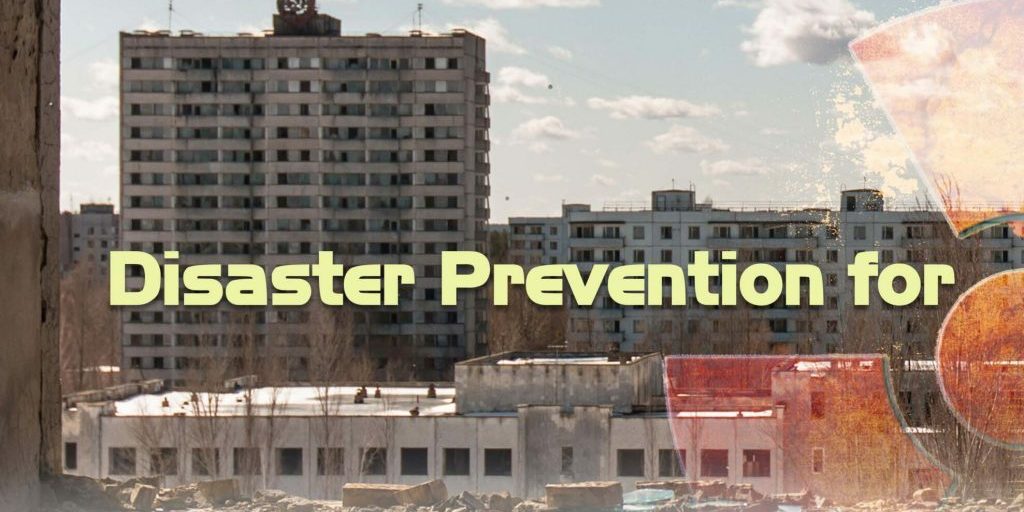On the morning of April 28, 1986, the alarm sounded at the Forsmark Nuclear Power Plant, about an hour north of Stockholm, Sweden. The plant chemist, Cliff Robinson, had just finished breakfast and was returning to work when he walked through and set off the personnel detector alarm. This was a very odd situation, as Robinson had not been in the controlled areas yet that day.
Soon, other workers started setting off the alarms as well. Forsmark immediately initiated its protocols to determine the source of the radiation, but found no faults at the facility. Next, the alarm to evacuate the plant sounded. Plant management retained control of the situation, and within hours other NPPs in the region were calling in with similar detections. This was, of course, how the world first learned of the Chernobyl disaster.
Thirty years after Chernobyl, the U.S. operates 99 nuclear reactors at 61 separate NPP sites. How likely would it be that one of the U.S. NPPs would be ‘caught in the crossfire’ and find itself downwind and in the fallout plume of a terrorist-caused nuclear burst? NPPs are typically located on the outskirts of the urban areas they support; however, a fallout pattern from a ground
burst nuclear device could go much farther. This situation has, in fact, occurred during exercises such as Vibrant Response. The detailed response at the NPP, however, has always been a ‘second-order effect’ and outside the exercise.
Could a U.S. NPP continue to operate if located in a fallout hazard area? The implications of a power plant shutdown in a region trying to recover from a major disaster cannot be overstated. Hospitals and command posts may have back-up generators that could last days, however, the population of an area without power for an extended period of time would quickly require relief water, food, security and possible relocation. If overlaid on a nuclear weapon detonation scenario, a major power outage situation could become untenable. Communities surrounding the nuclear burst, which could usually be expected to assist with relief operations would, themselves, need assistance.
How might a U.S. NPP react today if faced with a situation similar to the situation the Forsmark NPP faced three decades ago so far away? If NPP alarms are sounding due to external contamination, then they cannot do what they were installed for – detecting a fault or radiation release at the NPP. Given both degraded sensors, but also a time of public need, would the plant be allowed to continue operation? Who would make the decision to continue operations or begin to shut down the plant? Who would take responsibility for operating an NPP with degraded
sensors… the plant owners? The NRC? The governor? Or are shutdowns now automatic in the 21st century? Would the plant react differently to a warned, known event (a nuclear detonation in a
U.S. city would immediately become public knowledge) as compared to an unwarned, unknown event (a Radiation Distribution Device, or RDD, could be operated subtly outside an NPP)?
These were some of the questions raised in informal discussions around FEMA Region VII. The hardest of these questions were sent to the Homeland Defense & Security Information Analysis Center for evaluation. In response, HDIAC produced Technical Inquiry 2016-0596 Nuclear Power Plant Response Protocol, succinctly answering these and related questions.
Key points made in the HDIAC report include that each NPP operates under individual sets of specific and highly controlled guidelines and the decision to shut down NPP operations lies with the NPP’s responsible party. The decision to continue or cease power generation is predicated on the potential detriment to human health, environmental harm and operational criticality. Upon detection of an external radioactive plume, NPP health physicists begin their assessment with the ends of determining whether the plume was generated by the NPP. However, many radioactive effluent monitors are located within NPP structures, thereby rendering accurate location discernment ineffective.
For example, an event such as an RDD would not impact the stack gas monitors, and most likely the monitors would not even detect plume passage, nor alert the interior building or containment monitors.
When an external alarm is triggered, operators are the first line in the decision making process. From there, protocol depends on the managing agency. There is no standard protocol to guide all NPPs. After an external alarm is triggered, law enforcement agencies and members of the Nuclear Regulatory Commission arrive to determine the source of radiation and how to proceed.
While the gold standard of such evaluations is seeing them applied successfully to a real world event – something nobody wants to do – the silver standard is having the report reviewed by an actual representative NPP plant operator.
To that end, Mr. Dennis Branson, site specialist for Radiological Emergency Preparedness for FEMA Region VII provided a copy of HDIAC’s inquiry response report to Exelon Corporation, the largest operator of NPPs in the United States, for review. While they are still reviewing the document, initial impressions are that the HDIAC report is ‘correct on most parts’ when applied to their facilities and emphasized that the ‘shift manager would maintain control of the plant as the senior license holder.’ The report can serve as a cornerstone for discussions with Exelon and other companies operating in Region VII and beyond.
Conclusion
Looking beyond the immediate questions answered, this unclassified, publicly releasable report is a superb tool to help us initiate and facilitate discussions with the private sector. Our hope and intent is to use this HDIAC report, and ones like it, to increase collaboration and interoperability between industry and government partners.
References
1. Radio Sweden News in English (2011 April 22). 25 years after Chernobyl, how Sweden found out. Retrieved from http://sverigesradio.se/sida/artikel.aspx?programid=2054&artikel=4468603 (accessed April 12, 2016)
2. European Parliament News (2014 May 15). Forsmark: How Sweden alerted the world about the danger of the Chernobyl Disaster. Retrieved from http://www.europarl.europa.eu/news/en/news-room/20140514STO47018/Forsmark-how-Sweden-alerted-the-worldabout-the-danger-of-Chernobyl-disaster (accessed April 12, 2016)


